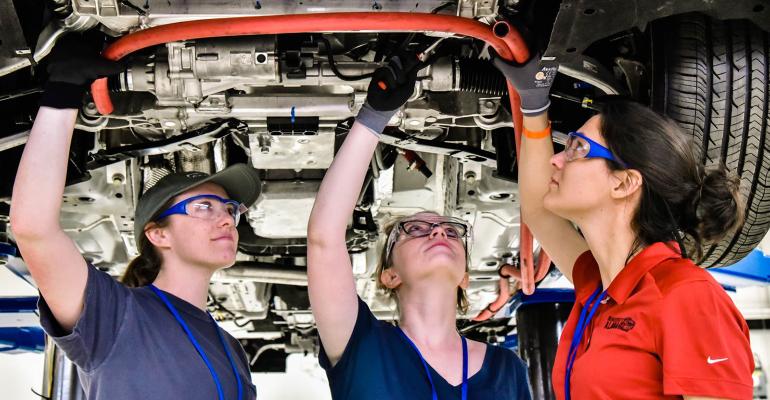The US Department of Energy (DOE) and Stellantis today announced the launch of the Battery Workforce Challenge, which includes a three-year collegiate engineering competition; vocational training; youth education in science, technology, engineering and math (STEM); and career and technical education. Advanced Battery Design Competition.
DOE has set a bold target to address the climate crisis and puts our nation on a path to achieve net-zero emissions, economy-wide, by 2050 for the benefit of all Americans. Key to this target goal are the design and development of advanced batteries to electrify the transportation and energy sectors and a highly skilled domestic workforce with the hands-on experience and knowledge needed for in-demand positions throughout the electric vehicle (EV)/battery industry.
Managed by Argonne National Laboratory for DOE and co-sponsored by Stellantis, this government and industry partnership will build the next generation of engineers, technicians and workers to address the unprecedented demand for a domestic EV/battery workforce.
“American leadership in the global battery supply chain will be based not only on our innovation, but also on our skilled workforce of engineers, designers, scientists, production workers, and technicians,” said Deputy Assistant Secretary for Sustainable Transportation and Fuels at the US Department of Energy, Michael Berube. “This comprehensive workforce program will build an educational ecosystem delivering training and education for high school graduates, and vocational and transitional workers, fostering a diverse talent pipeline of trained engineers, workers and technicians who can charge North America’s battery industry forward.”
Battery design and development competition
Kicking off in fall 2023, the Battery Workforce Challenge includes an advanced battery design and development student competition series that invites universities and vocational schools from across North America to design, build, test and integrate an advanced EV battery into a future Stellantis vehicle.
“With our Dare Forward 2030 strategic plan, Stellantis is taking a leadership role in decarbonization that will drive us to become an industry champion in the fight against climate change, reaching carbon net zero emissions by 2038,” said Mark Stewart, Stellantis North America Chief Operating Officer. “The Battery Workforce Challenge will help train the engineers of tomorrow and is a win-win for Stellantis and the entire battery industry as we address our nation’s toughest energy and mobility challenges by helping to build a highly skilled and productive future workforce.”
Teams will follow real-world industry milestones focused on battery design, simulation, controls development, testing, and vehicle integration and demonstration. Participants will also learn valuable project management, communications, teamwork and problem-solving skills that will provide unparalleled educational experience and ready them for future careers throughout the battery industry.
Additional initiatives
Additional workforce and education initiatives will complement the challenge, including a national Career-Connected Learning Management System to provide flexible, accessible and equitable training for learners across the education pipeline, as well as high school graduates and transitional workers, to connect participants to top jobs from the nation’s leading automotive and battery employers.
“We’re excited to welcome 11 teams to participate in the Battery Workforce Challenge, which is a great opportunity for college and vocational students to experience high-impact collaborations,” said Paul Kearns, director at Argonne National Laboratory. He added, “We are pleased to manage this competition, which supports both advanced battery innovations and the development of the next generation of battery researchers and professionals.”
For more background about the Battery Workforce Challenge, please visit BattChallenge.org.
https://www.techedmagazine.com/category/news-by-industry/energy-education/

